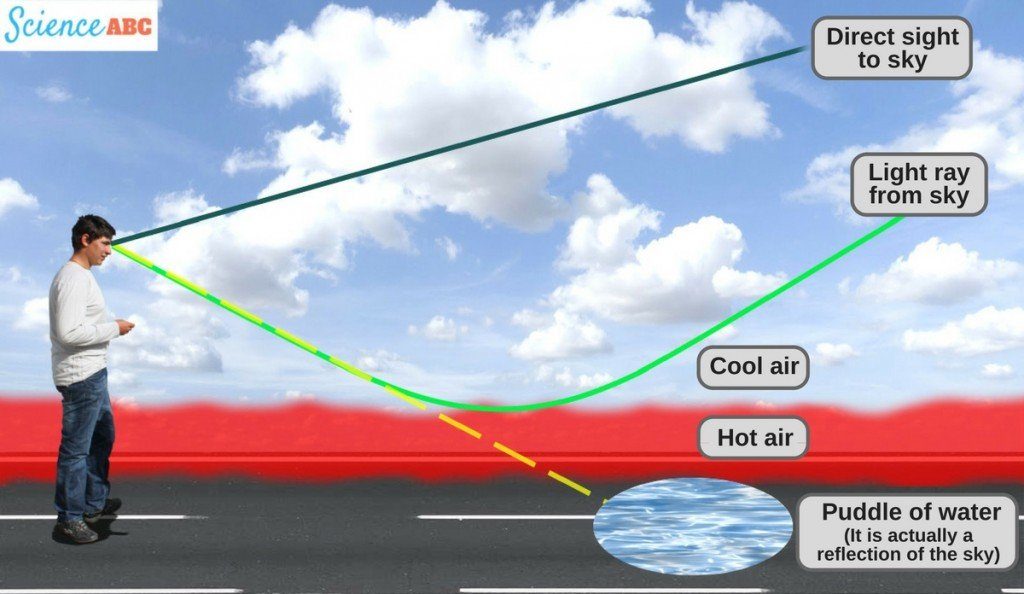When walking down the street or driving in a car on a swelteringly hot day, you may have seen something that looks like see a puddle of water up ahead on the road.
However, upon arriving at the spot where you could have sworn the puddle was, you discover it is no longer there or it has moved even further up the road.
This is also the same illusion that occurs when parched travellers think they see an oasis in the desert.
Highway mirages are extremely convincing optical illusions caused by the interactions of light and hot air.
But how exactly does this illusion work?
Light travels around 300 million meters per second. However, its speed is affected by the medium it is travelling in.
The speed of light is slower when it travels through denser media such as water, and faster in lighter media, like air.
This occurs because the photons (particles that make up light) interact with the particles of the medium they are travelling through.
This is because of the photons being absorbed and emitted over and over again, lowering the average speed of the photons ever so slightly.
The amount light is slowed depends on the characteristics of the specific medium, which can be classified numerically by a ratio called the refractive index (RI).
A medium’s RI is affected by its temperature: as the temperature of the medium increases, the particles get further and lower its density, as well as its RI.
The differences of RIs caused by temperature and density shifts is the main cause of the water mirage. When it is very hot and sunny, roads can become very hot.
Generally, roads are grey or black, meaning that they absorb significantly more heat than other light-coloured objects. These hot roads raise the temperature of the air just above them, creating a pocket of warm, less-dense air sitting just below relatively cooler and denser air.
When light rays from the sun reach this air pocket just above the road, the speed of the photon increases slightly, causing its path to alter, or bend from an observer’s point of view.
This makes something that looks like a puddle of water appear on the road. However, due to the bending of the light, this water is actually just a reflected image of the sky.
Optical illusions are fascinating, and understanding how they work makes us think about how reliable our eyes really are.






























